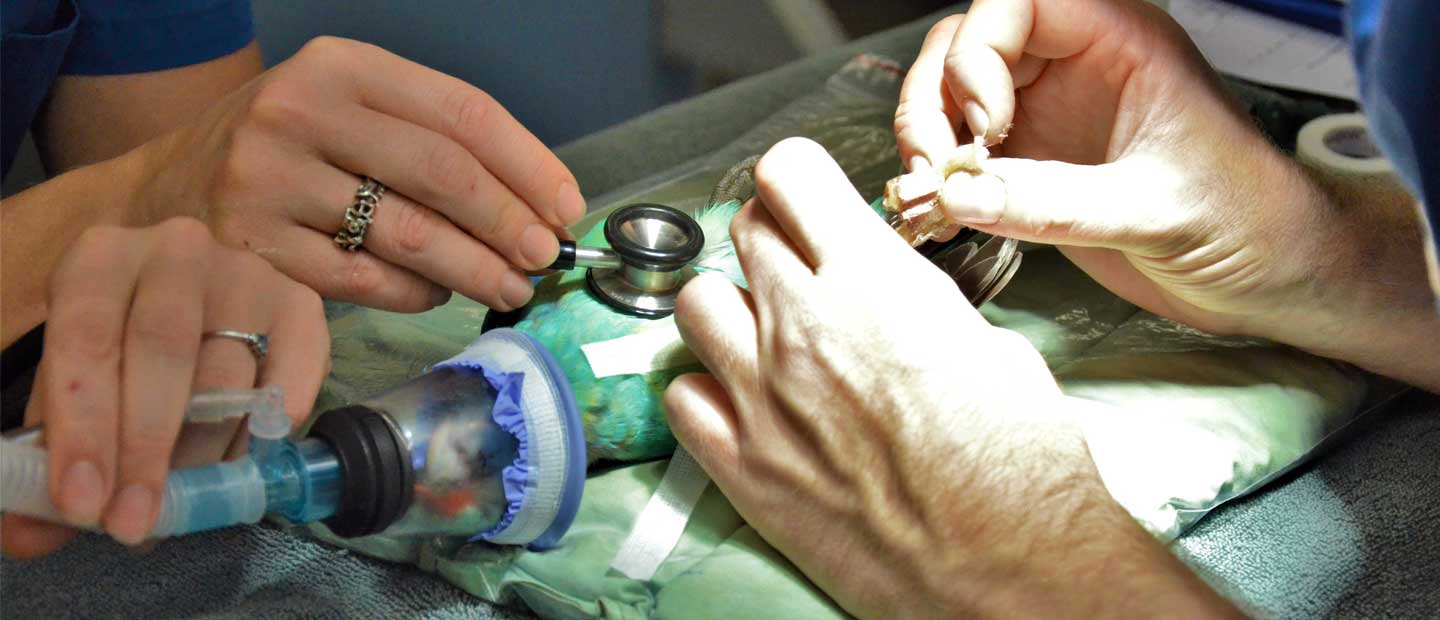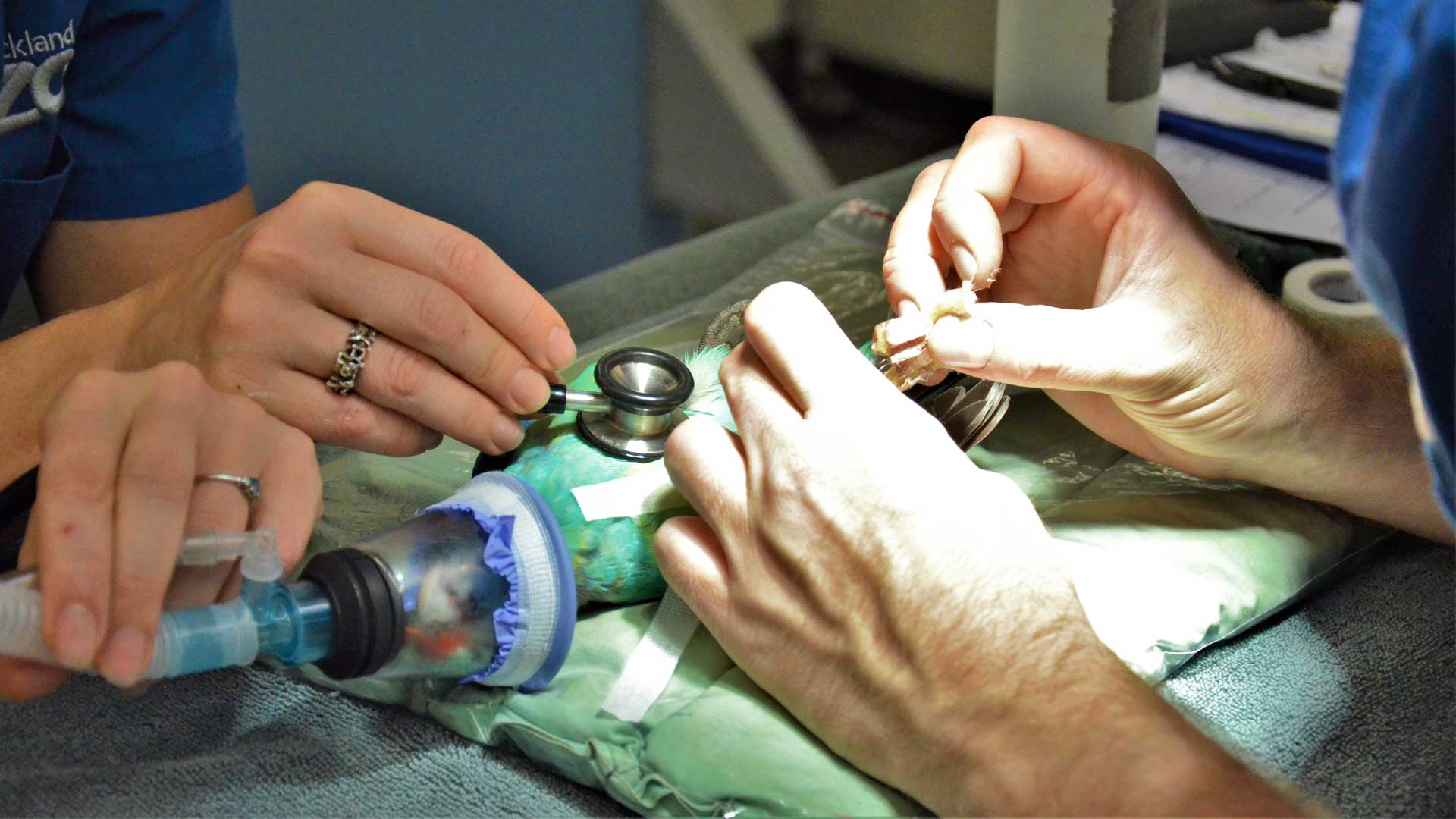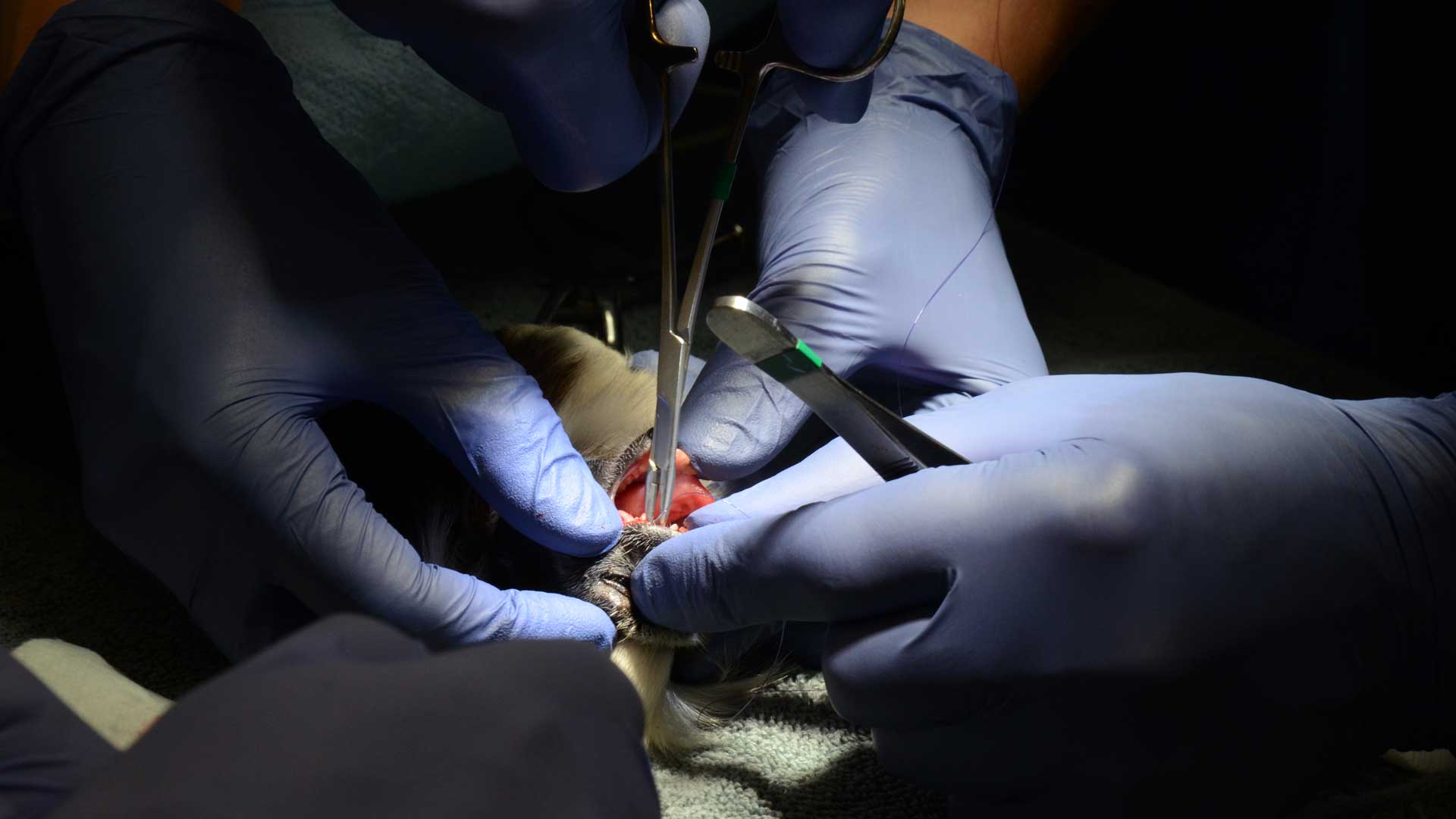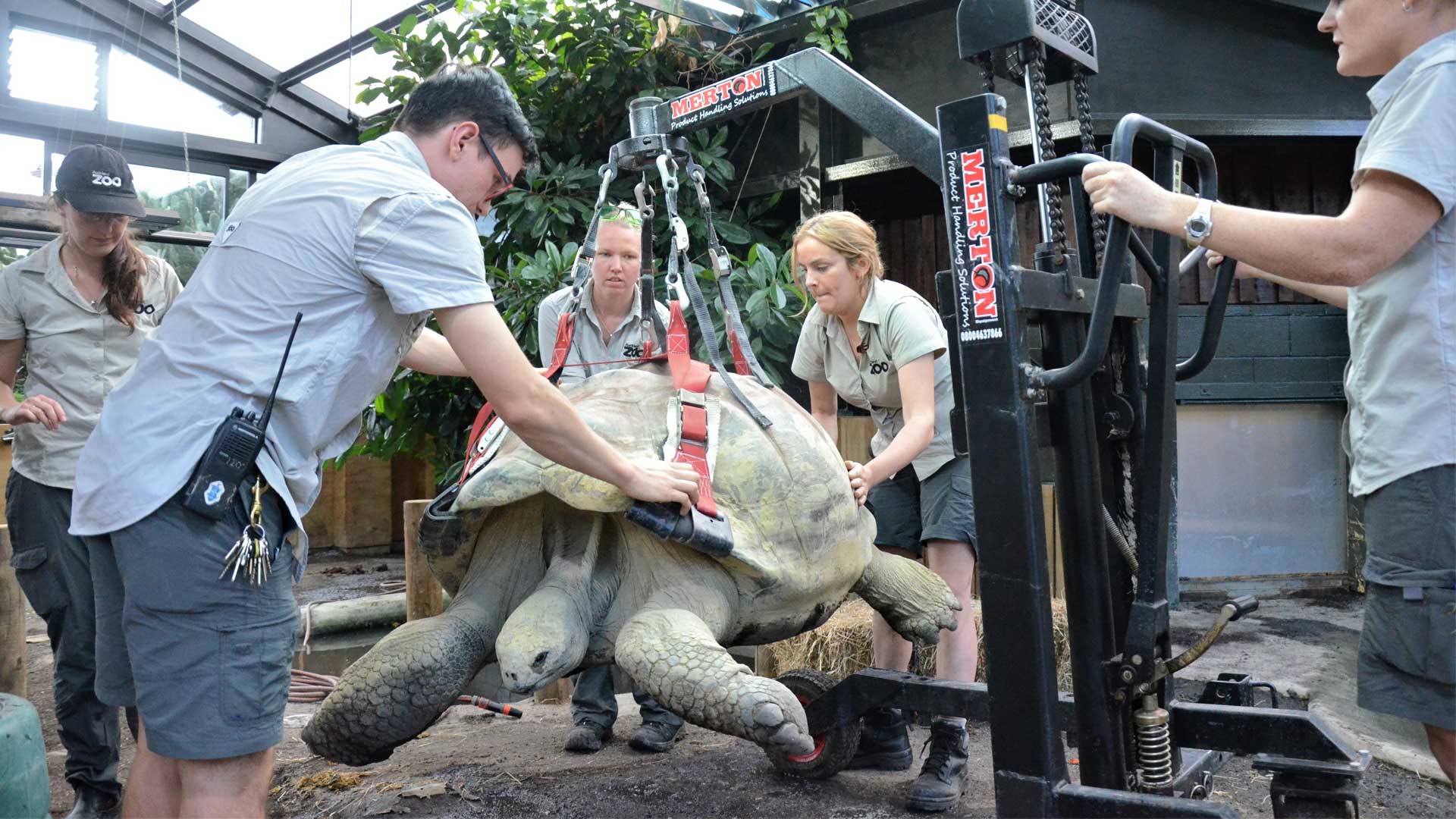For a vet, you might think making a splint, removing a tooth, or taking an x-ray is fairly standard practice, but with patients ranging from a tiny 100-gram bird, to huge 1900 kg white rhinoceros, the answer is rarely straightforward or ‘standard’.
James Chatterton, Auckland Zoo’s Veterinary Services Manager has seen his share of extreme cases. Last year, a Mallee Parakeet fractured a bone in its right leg – a bone that is only 13 millimetres long – and required a splint to heal. Usually orthopaedic wires or pins would be used for an animal splint, but the splint would need to be strong enough to stop the bone from moving, but light enough so that a 100-gram bird could still move around a hospital cage.
“There is nothing specially designed for use in such small patients, so we have to get creative and use our craft skills,” said Dr Chatterton.
A 40-millimetre splint was designed, made of soft bandage, pieces of cotton bud sticks, layers of sticky tape and glue, and it had to be taken off and reapplied every few weeks.
Dr James Chatterton, Veterinary Services Manager at Auckland ZooThe variety of animals and requirement to constantly learn new techniques are two big reasons why I love being a zoo and wildlife vet. There is so much new information to learn that the old adage “every day’s a school day” definitely applies to us. As we learn, we develop expertise and then pass on this knowledge to our colleagues at work and to our peers at conferences.
In contrast, male Galapagos tortoise Willy injured his leg last year, and even being able to determine the injury required a huge degree of innovation. How do you x-ray a 260-kilogram tortoise? How do you get it to keep its leg still? How do you move something that heavy into the right position? The ectotherm team designed a ‘hoist’, a contraption used to painlessly lift the tortoise into the air to be able to properly assess it from all different angles.
At 17,000 times lighter than a Galapagos tortoise, the smallest patient operated on at Auckland Zoo was a Northland green gecko, easily fitting into the palm of your hand. The gecko only weighed 15 grams and had an abdomen the same size as a USB stick, so you can probably imagine that the size of the bladder stone that needed removing was tiny!
Video
We're taking an X-ray of our Galápagos tortoise!
Our ectotherm keepers developed an ingenious solution to assess our Galápagos tortoises – a custom built tortoise hoist
Dentistry is another complicated matter with wild patients – a tamarin, meerkat or rhino won’t let you stick your hand inside their mouths as a human patient would. At Auckland Zoo, we work with external vet dentists to assess teeth, and at times remove them. If it’s a 1 kg meerkat, or a 1900 kg white rhino, both require a general anaesthetic and a whole range of logistics to complete the procedure.
“The variety of animals and requirement to constantly learn new techniques are two big reasons why I love being a zoo and wildlife vet. There is so much new information to learn that the old adage “every day’s a school day” definitely applies to us. As we learn, we develop expertise and then pass on this knowledge to our colleagues at work and to our peers at conferences. This sharing of knowledge in a learn, develop, teach cycle is a core principle in our profession and it is this that allows the zoo vet profession to continually improve the overall level of care we provide for our patients,” concludes Dr Chatterton.
Video
It's a quick visit to the dentist for our rhino Zambezi
Our Vet Hospital team first anesthetise Zambezi prior to his dental procedure, making sure to work quickly and efficiently.










